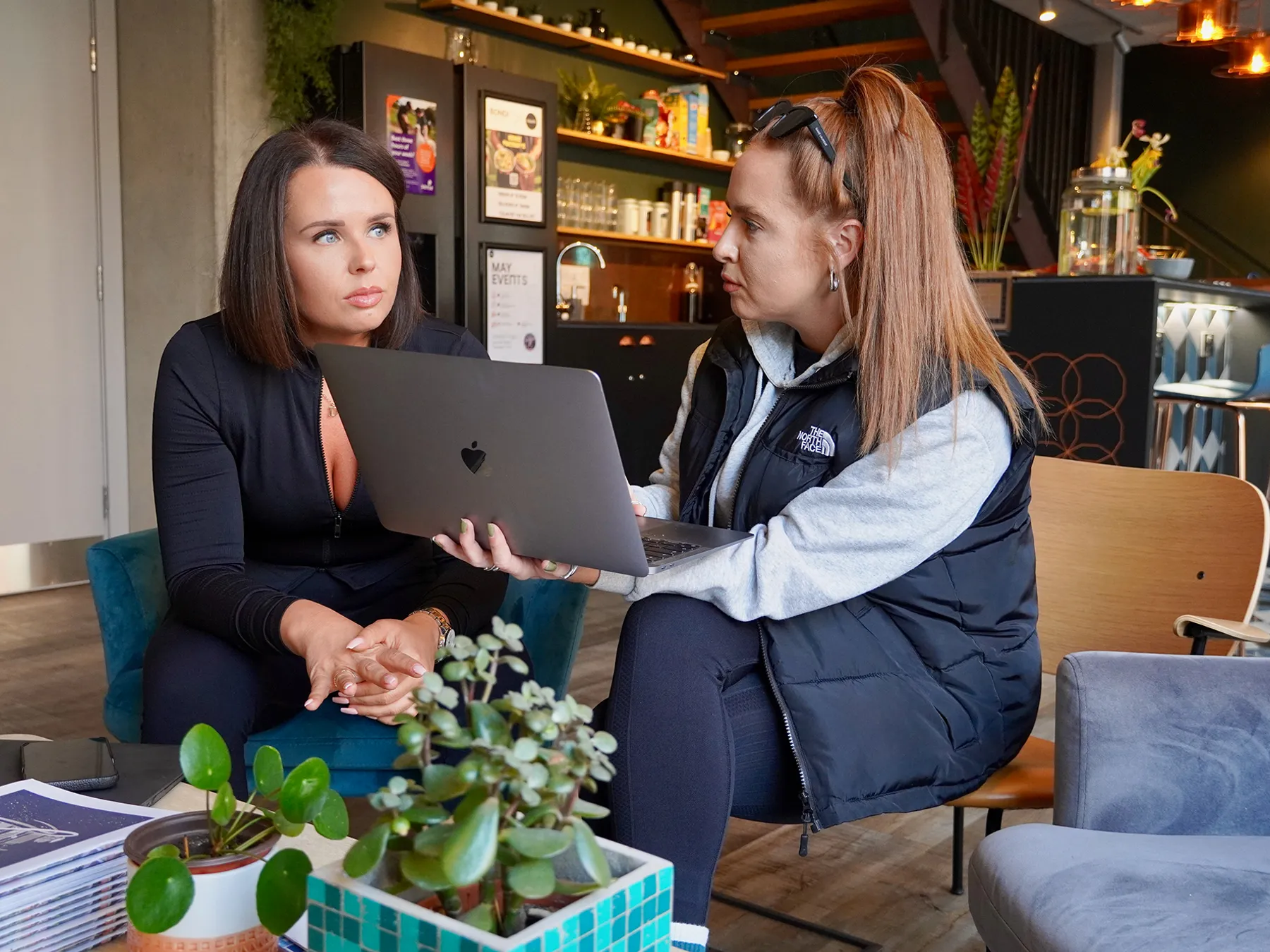Marketing Strategy
Branding
Activations
Social Media
Get to know us
ROI-Driven Marketing: A Deep Dive


Jordan Stachini
Contents
What pops into your head when we say ROI? If you’re thinking it’s all about the cash, think again. ROI isn’t just about money—it’s about value, impact, and influence. Sure, sales are great, but let’s not overlook the power of brand building, customer engagement, and long-term loyalty.
We're about to dive deep into how various marketing channels play a key role in shaping ROI, explore some mega campaigns that broke the mould, and guide you through the process of calculating ROI. So, if you’re ready for a no-bullsh*t journey through ROI-driven marketing, going beyond just sales, then stick around. This blog is your first step toward smarter marketing.
With co&co, you get the raw, unfiltered truth about what works, what doesn’t, and how you can start seeing those dollar signs.
The Nuances of ROI in Different Marketing Channels
Crafting a marketing plan with ROI at the core ensures you’re not just spending money—you’re making it work for you. ROI isn’t just an acronym to throw around at meetings to sound smart—it’s the life of any campaign worth its salt. Whether it’s digital or traditional media, understanding the return on your investment helps you figure out if you’re throwing cash into a pit or printing it. And remember, while all sales are conversions, not all conversions are sales. Here’s what you need to know:
Digital Marketing: Whether it's the instant gratification of PPC or the slow burn of SEO, digital channels offer clear metrics like click-through rates (CTR) and cost per acquisition (CPA). But let's get one thing clear: getting a click doesn't always mean ringing up a sale. Sometimes, a conversion might just be a sign-up or an inquiry—important, but not the same cash-in-the-till moment.
Traditional Marketing: These old-school channels aren't dead. TV, radio, and print can still pack a punch. Here, conversions might look like increased foot traffic or higher call volumes, not just direct sales. It’s key to recognise that these softer metrics can lead to sales down the line, shaping a fuller picture of your ROI.
At co&co, we widen our lens to recognise that conversions come from a variety of actions beyond sales, we can craft smarter, more effective marketing strategies that fuel both immediate and long-term ROI. Don't get stuck only counting the cash when building brand loyalty and customer engagement is playing the long game right under your nose.

Breakdown of Marketing Channels and their ROI Considerations
Digital Marketing
👉 Social Media: It’s all fun and likes until you need to prove conversions. Social media can be a bit of a wild card when it comes to ROI. The platforms you choose and the strategies you employ can really influence the kind of return you see. Each social platform offers unique advantages and challenges in measuring ROI. It's not just about tracking likes and shares; it’s about understanding how these engagements translate into measurable business goals. Whether through direct sales, leads, or enhanced brand recognition, the key is to align your social media strategies with your overall marketing objectives to see real, tangible returns on your investments.

👉 Email Marketing: Personalisation in email marketing makes all the difference, there’s a psychology to it. No one’s going to click on an email that says, "Hey, [First Name Here]!" like they're just another entry in a database. Everyone does that now. It’s about sending a message that resonates on a personal level—think recent purchases, birthday discounts, or content tailored to individual preferences. When emails feel personal, your audience is more likely to engage, driving up those conversions. Whether it’s signing up for an event, downloading content, or actually buying something, each action is a step towards a bigger payoff.
👉 SEO (Search Engine Optimisation): It’s about sustainable growth and building a solid foundation for your brand online. With SEO, you're investing in organic search strategies, which include optimising your website content, enhancing your technical setup, and earning backlinks from reputable sites. The ROI from SEO is far from immediate; it builds over time as your search rankings improve, leading to increased visibility and organic traffic. The major win here is that once you’ve established strong SEO, it continues to pay dividends long after the initial investment, with minimal ongoing costs.
👉 PPC (Pay-Per-Click): PPC is like a sprint. It offers quick wins by putting your brand at the top of search results almost instantly through paid ads. This channel is highly controllable and incredibly granular in targeting, allowing you to reach specific demographics at the right times. The ROI can be straightforward to measure as you can see exactly how much you are spending per click and can compare it to what those clicks bring in terms of conversions. However, unlike SEO, as soon as you stop pumping money into PPC, the traffic drops off. PPC requires a continuous investment to maintain visibility and traffic, but it’s excellent for immediate results, such as launching a new product, promoting a time-sensitive campaign, or breaking into new markets.
Traditional Marketing
👉 TV: Television still remains a good platform for brand visibility and reach. It's particularly effective for reaching a broad audience and creating a strong emotional connection through decent visuals and sound. However, the main challenge lies in accurately measuring the impact of TV ads on sales, especially with the rise of digital channels. Advanced metrics like TV attribution analysis are helping bridge this gap by tracking viewer engagement and correlating it with sales activity around the time of ad broadcasts.
According to the Mutinex report, TV remains one of the most reliable media for driving revenue, with little change in its revenue share despite decreased investment. This shows that, while digital metrics might be easier to track, TV still delivers significant commercial outcomes, making it a key player in any balanced marketing strategy.
👉 Radio: Radio advertising can be a cost-effective way to reach local markets and specific demographics. The immediacy of radio and its wide reach make it ideal for promotions and time-sensitive offers. Like TV, tracking the direct impact of radio on ROI can be difficult. However, tools such as unique promo codes, dedicated phone lines, and specific landing pages for campaigns are used to trace response rates more effectively.
Print: Newspapers, magazines, and direct mail offer tangible touchpoints that can make a lasting impression. Print is really good for targeting specific niches and providing detailed information that consumers can refer back to. The challenge with print is the delayed response compared to digital media and the difficulties in tracking how many people actually see and react to the ads. QR codes, unique URLs, and promotional codes are being used to improve measurability in print advertising.
Events: Participating in or hosting events can be a highly effective marketing tool, offering direct customer engagement and opportunities for real-time feedback. You get to mingle directly with your crowd, grabbing real-time feedback and sparking immediate interest or even sales right there. We at co&co have seen this magic in action—events can boost brand loyalty like nothing else. Measuring the win? Look at the sales during the event, who’s signing up, and the buzz it generates afterwards. Plus, events often generate secondary ROI through increased brand awareness and media coverage.

Real-World Case Studies of High ROI Campaigns
Here are three real-world examples of marketing campaigns that delivered high ROI:
Old Spice – “The Man Your Man Could Smell Like” Campaign
Launched in 2010, this viral campaign featured a series of humorous and quirky commercials that transformed Old Spice's brand image from an "old man's" aftershave to a must-have grooming product for men of all ages.
Strategy: Leveraging the power of social media and celebrity endorsements, Old Spice created engaging content that was shared widely, sparking conversations online and offline.
Outcome: The campaign reportedly increased Old Spice Body Wash sales by 125% in one month following the campaign’s start, with the brand's website traffic increasing by 300% and YouTube channel views by 800%.
Dove – “Real Beauty Sketches” Campaign
This 2013 campaign aimed to challenge the societal standards of beauty. Dove contrasted how women viewed themselves vs how others perceived them through sketches drawn by a forensic artist.
Strategy: Dove used emotional appeal and relatability to engage a broad audience, supported by a strong presence on social media and various online platforms to amplify their message.
Outcome: The video quickly became one of the most watched of all time on YouTube at the time, significantly boosting sales and increasing market share in the following months.
Cadbury – “Gorilla” Campaign
Launched in 2007, Cadbury’s “Gorilla” campaign featured a gorilla playing the drums to Phil Collins’ song "In the Air Tonight." The ad was meant to convey the pure joy Cadbury’s chocolate brings its consumers.
Strategy: The ad broke away from traditional chocolate advertising, which often focuses on the product itself, and instead aimed to capture the audience’s emotions through a memorable and engaging experience. The campaign utilised television and online platforms to maximise reach. And it worked.
Outcome: The campaign was a massive success, resulting in a significant increase in Cadbury Dairy Milk sales—reportedly by over 9% year-over-year. It rejuvenated the brand, significantly improved brand sentiment, and became a cultural talking point, enhancing Cadbury's market dominance in the UK.
Avoiding Common Pitfalls in ROI Calculation
Understanding Common Calculation Errors
Calculating ROI is something a lot of people struggle with. Guesswork and rough estimates don’t fly if you want to make sure your campaigns are really paying off. Using a sh*t calculator for your taxes just wouldn’t work would it? The same goes for calculating your marketing ROI:
👉 Incorrect Attribution: This is about giving credit where it’s due, not just where it’s easiest to track. It's easy to attribute a sale to the last click, but what about all the touchpoints before that? Multi-touch attribution models can help distribute credit more accurately across the customer journey, ensuring that each channel's impact on the final conversion is recognized and valued.
👉 Long-term ROI: Don’t get stuck in the short-sighted view of immediate results. Today’s marketing spend is tomorrow’s profit. Some campaigns, especially those aimed at building brand awareness or entering new markets, may take time to show their true value. Measure ROI over an extended period to capture the full impact of your strategies.
Pitfalls to Avoid in ROI Calculation
👉 Misjudging Customer Lifetime Value (CLV): It's easy to focus on the immediate sale, but what about the customer's total potential value? Misjudging CLV can lead you to underspend on acquisition or customer care, potentially missing out on greater profits long-term. Regularly update your CLV calculations to reflect changes in customer behaviour and market conditions.
👉 Hidden Costs: Many campaigns incur costs that are not immediately apparent—things like overhead, creative development, and even opportunity costs. These hidden expenses can skew your ROI if they're not accounted for. Make sure all related costs are included to get a true picture of your investment's effectiveness.
Steps to Accurate ROI Calculation
✔️ Define clear objectives—know what success looks like.
✔️ Track the right metrics—look beyond the obvious.
✔️ Account for all costs—no surprises.
If you’re not measuring ROI, you’re probably losing money without knowing it. Having an ROI-driven marketing strategy ensures every penny you invest is working hard to drive results and grow your business. Fancy a chat about boosting your marketing ROI? Hit us up at co&co. We don’t just talk; we deliver. Let’s work together.

Speak to Jordan today
Grab a brew. Have a read
You might also like...






